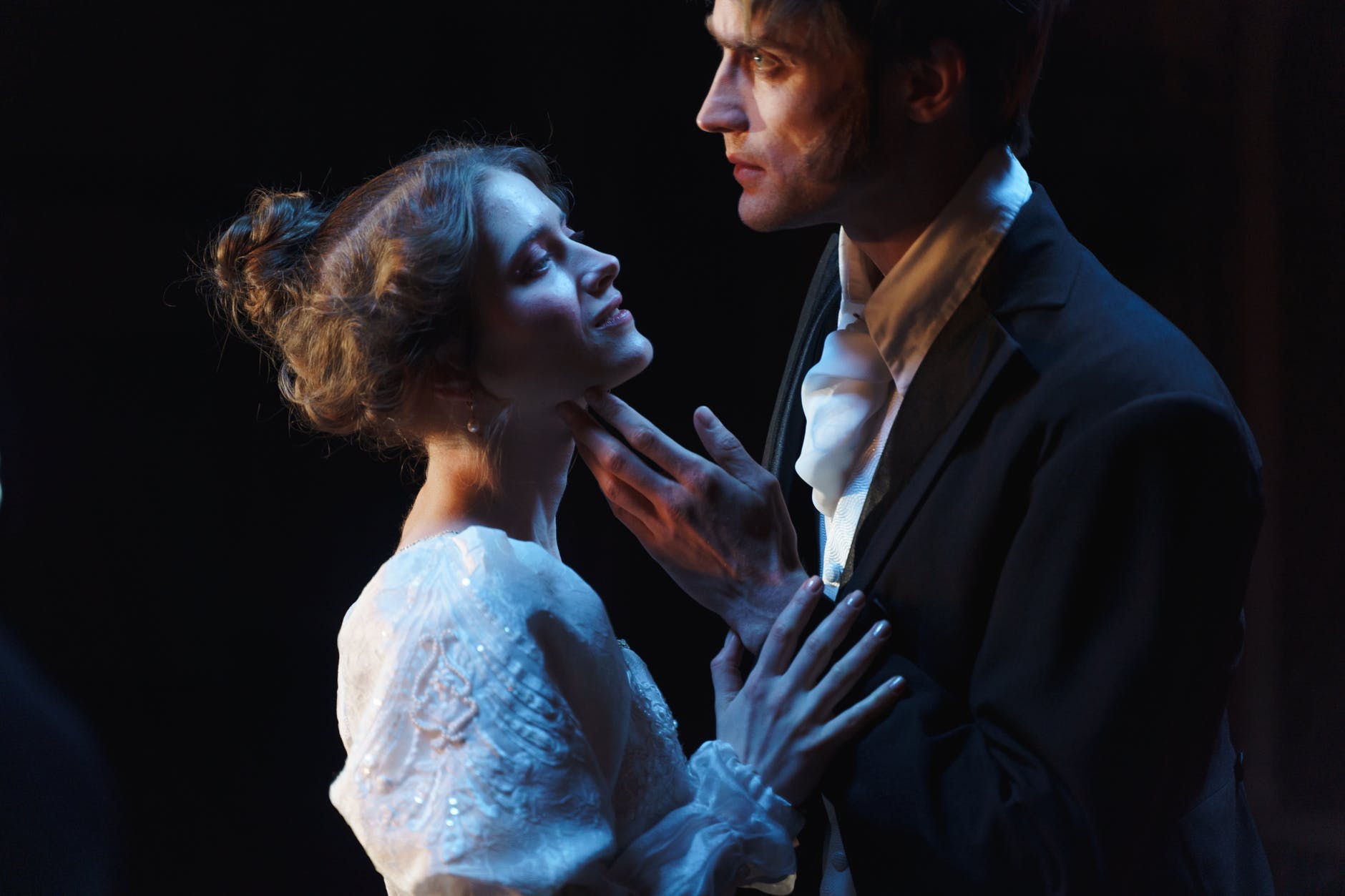What is Stage Kissing?
Everything you ever wanted to know about kissing for the camera
(By Javier Guerra)
 (Photo: Vera Arsic | Pexels)
(Photo: Vera Arsic | Pexels)
RELATED TOPICS:
How Do Actors Kiss Without Kissing?
Do Some Actors Refuse to Kiss?
Stage kissing, also known as fake kissing or simulated intimacy, is a technique used in theater, film, and television to portray romantic or intimate moments between characters without actual physical contact or romantic involvement between the actors. It’s a fundamental aspect of performing arts that requires skillful execution to create believable and convincing scenes of affection.
Do actors really kiss?

In most cases, actors do not actually kiss during stage performances, film shoots, or television productions. Instead, they employ various techniques and methods to create the illusion of kissing while maintaining a professional distance and respecting personal boundaries.
While there are instances where actors may engage in real kissing for artistic or narrative purposes, such scenes are relatively rare and typically occur with careful consideration and consent from all parties involved. In most cases, however, the emphasis is on creating the illusion of kissing through skillful performance and technical execution.
How awkward is it for actors to kiss?
 (Photo: Katie Salerno | Pexels)
(Photo: Katie Salerno | Pexels)
The level of awkwardness actors experience when kissing on stage or on camera can vary greatly depending on several factors, including the actors’ personal comfort levels, the nature of their relationship off-screen, the context of the scene, and the professionalism of everyone involved.
Despite these considerations, some actors may still find kissing scenes awkward due to personal factors such as shyness, discomfort with physical intimacy, or differences in acting styles. In such cases, directors and production teams work to create a supportive and respectful environment where actors feel safe expressing their concerns and finding solutions that work for everyone involved.
Do actors brush their teeth before kissing scenes?

Yes, it’s common practice for actors to take measures to ensure their breath is fresh before kissing scenes. This often includes brushing their teeth, using mouthwash, chewing gum, or using breath mints. Maintaining good oral hygiene is essential, especially when filming or performing intimate scenes, as it helps to create a more comfortable and pleasant experience for both actors involved. Additionally, some productions may provide specific guidelines or resources to help actors prepare for kissing scenes, such as access to dental hygiene products or breath fresheners on set.
Do actors get tested before kissing?
 (Photo: Diana Polekhina | Unsplash)
(Photo: Diana Polekhina | Unsplash)
In some cases, especially in the context of film and television productions, actors may be required to undergo COVID-19 testing before performing intimate scenes, including kissing scenes. This measure is part of the broader safety protocols implemented by production companies to mitigate the risk of COVID-19 transmission among cast and crew members.
The frequency and extent of COVID-19 testing can vary depending on factors such as the production’s budget, location, and specific health guidelines in place at the time of filming. In many cases, actors and other personnel involved in close-contact scenes are tested regularly, often several times per week, to ensure a safe working environment.
Additionally, even outside the context of a pandemic, actors may undergo various health screenings or tests as part of standard industry practices to ensure the well-being of everyone involved in a production.
Do actors use tongue when they kiss?
 (Photo: Mart Production | Pexels)
(Photo: Mart Production | Pexels)
Whether actors use tongue during kissing scenes depends on several factors, including the nature of the scene, the director’s vision, the comfort level of the actors, and the guidelines set by the production. In many cases, particularly in mainstream film and television, on-screen kisses are simulated, meaning that actors do not engage in actual kissing with tongue. Instead, actors may use various techniques to create the illusion of kissing while maintaining a professional distance.
Do actors feel anything when they kiss?
 (Photo: Anna Shvets | Pexels)
(Photo: Anna Shvets | Pexels)
When actors kiss on screen or stage, their experience can vary widely depending on individual factors such as personal boundaries, emotional connection with their scene partner, and the context of the scene.
Ultimately, while actors may experience a range of emotions during kissing scenes, including chemistry, excitement, or nervousness, their primary focus is on delivering a compelling and authentic performance that serves the narrative of the production. Personal feelings are secondary to the storytelling goals of the scene.
What happens if actors don’t want to kiss?
 (Photo: Cottonbro | Pexels)
(Photo: Cottonbro | Pexels)
If actors are uncomfortable or unwilling to perform a kissing scene, directors and production teams typically respect their wishes and work together to find alternative solutions. Here’s what may happen if actors don’t want to kiss:
1. Discussion and Communication: If actors express discomfort with the kissing scene, the director and production team will have a discussion with them to understand their concerns and explore alternative options. Open communication is key to ensuring that the actors feel heard and respected.
2. Revising the Scene: Depending on the nature of the production and the importance of the kissing scene to the storyline, the scene may be revised or rewritten to accommodate the actors’ preferences. This could involve changing the blocking, dialogue, or context of the scene to maintain the narrative while addressing the actors’ concerns.
3. Using Body Doubles or Stunt Performers: In some cases, body doubles or stunt performers may be used to stand in for the actors during the kissing scene. These stand-ins closely resemble the actors and are trained to perform the required actions while maintaining consistency with the characters’ appearances and movements.
4. Using Camera Tricks and Editing: Directors may employ camera angles, editing techniques, and visual effects to create the illusion of kissing without requiring physical contact between the actors. This allows the scene to be portrayed convincingly while respecting the actors’ boundaries.
5. Respecting Boundaries: Ultimately, the decision to perform a kissing scene lies with the actors, and their comfort and well-being are paramount. Directors and production teams prioritize professionalism, respect, and consent, and they will never pressure actors into performing scenes that make them uncomfortable.
By maintaining open communication, flexibility, and a collaborative approach, directors and production teams can work together with actors to find solutions that ensure the integrity of the production while respecting everyone’s boundaries and preferences
How do they shoot kissing scenes?
 (Photo: Ron Lach | Pexels)
(Photo: Ron Lach | Pexels)
Shooting kissing scenes in film and television involves several considerations to ensure the scene looks authentic while maintaining professionalism and respecting the boundaries of the actors involved. Here’s an overview of how kissing scenes are typically shot:
1. Preparation: Before filming the kissing scene, actors, directors, and choreographers discuss the blocking (movement and positioning) of the scene. They determine the angles, camera shots, and physical actions necessary to convey the desired intimacy while ensuring the comfort and safety of the actors.
2. Camera Angles: The director and cinematographer choose camera angles that capture the intimacy of the scene while maintaining the actors’ privacy and comfort. Close-up shots of the actors’ faces are common to highlight the emotions and reactions during the kiss.
3. Body Doubles: In some cases, especially for more explicit scenes or when actors are uncomfortable with physical contact, body doubles may be used. Body doubles are stand-ins who resemble the actors and perform the physical actions required for the scene.
4. Substitutes and Props: To create the illusion of kissing without actual contact, substitutes or props may be used. Actors may press their lips against a cheek, chin, or hand of their scene partner, or they may use props such as fans or hands to block the view of the camera.
5. Multiple Takes: Kissing scenes are often shot multiple times from different angles to capture the best possible footage. Actors need to maintain consistency in their performance throughout these takes, including their body movements, facial expressions, and emotional intensity.
6. Professionalism and Communication: Throughout the filming process, directors and production teams prioritize professionalism, respect, and clear communication. Actors are encouraged to voice any concerns or discomfort they may have, and breaks are provided as needed to ensure their well-being.
7. Post-Production: After filming, editing techniques may be used to enhance the realism of the kissing scene. This includes adjusting lighting, sound effects, and music to create the desired mood and atmosphere.



